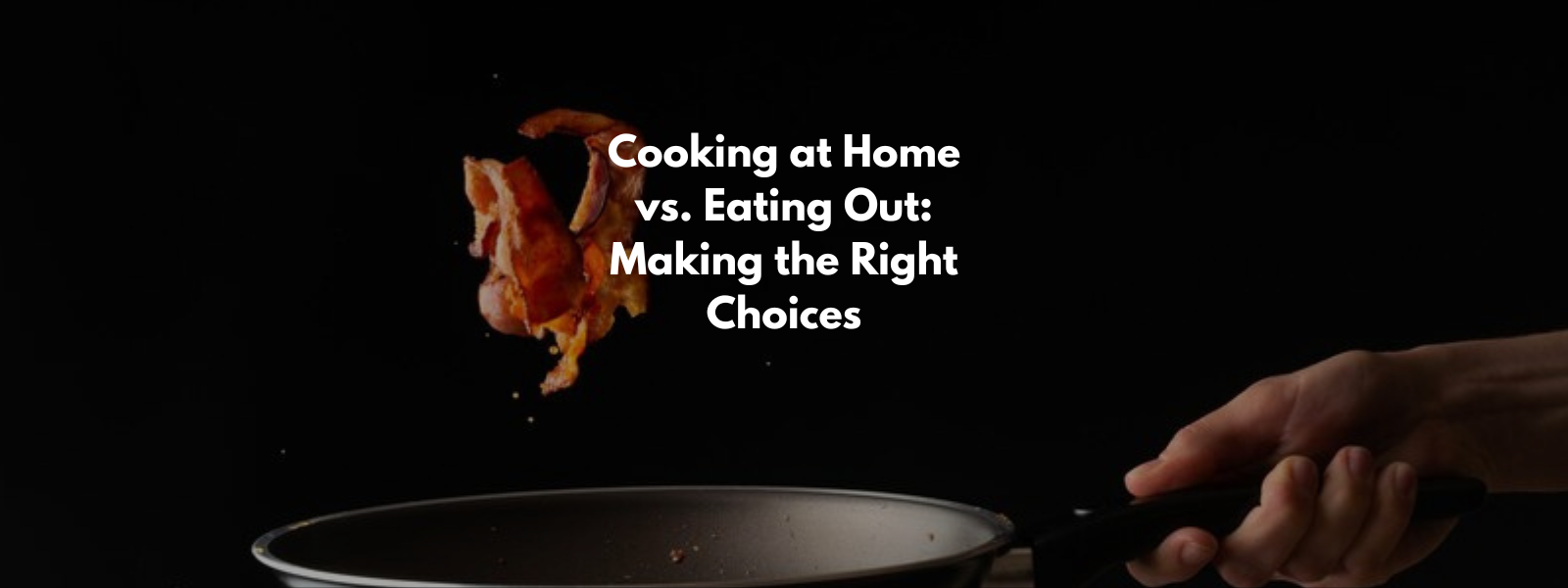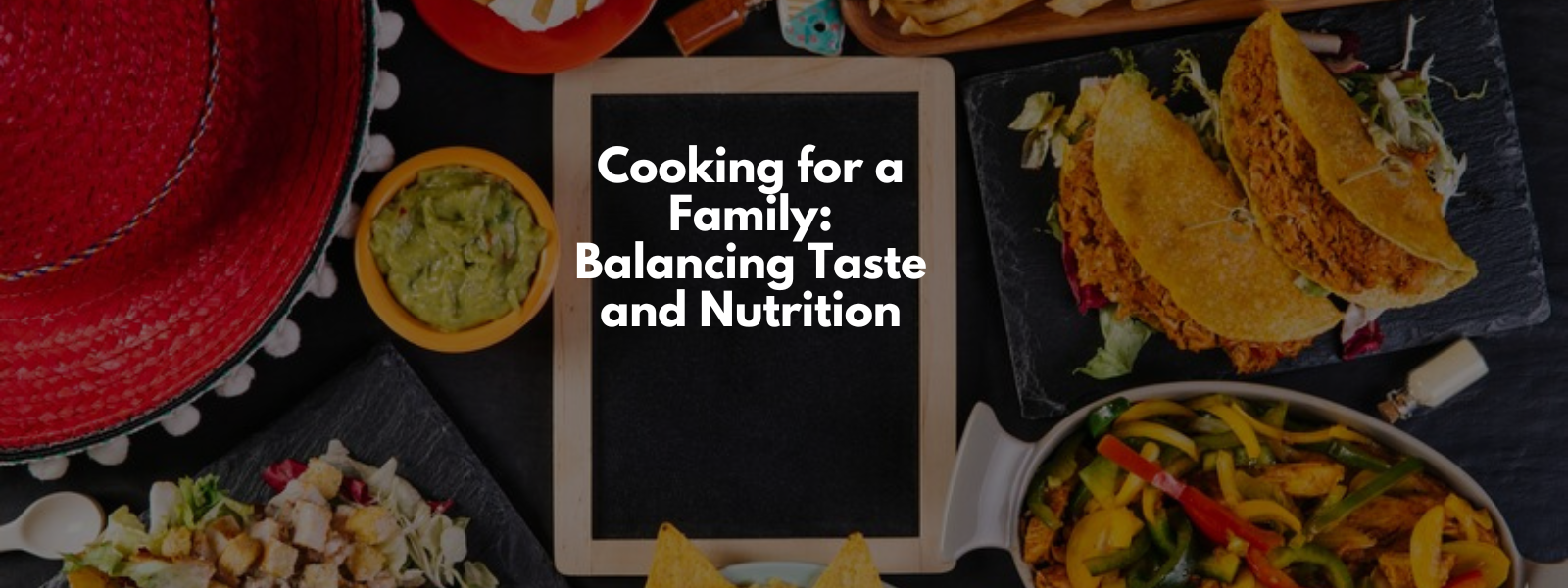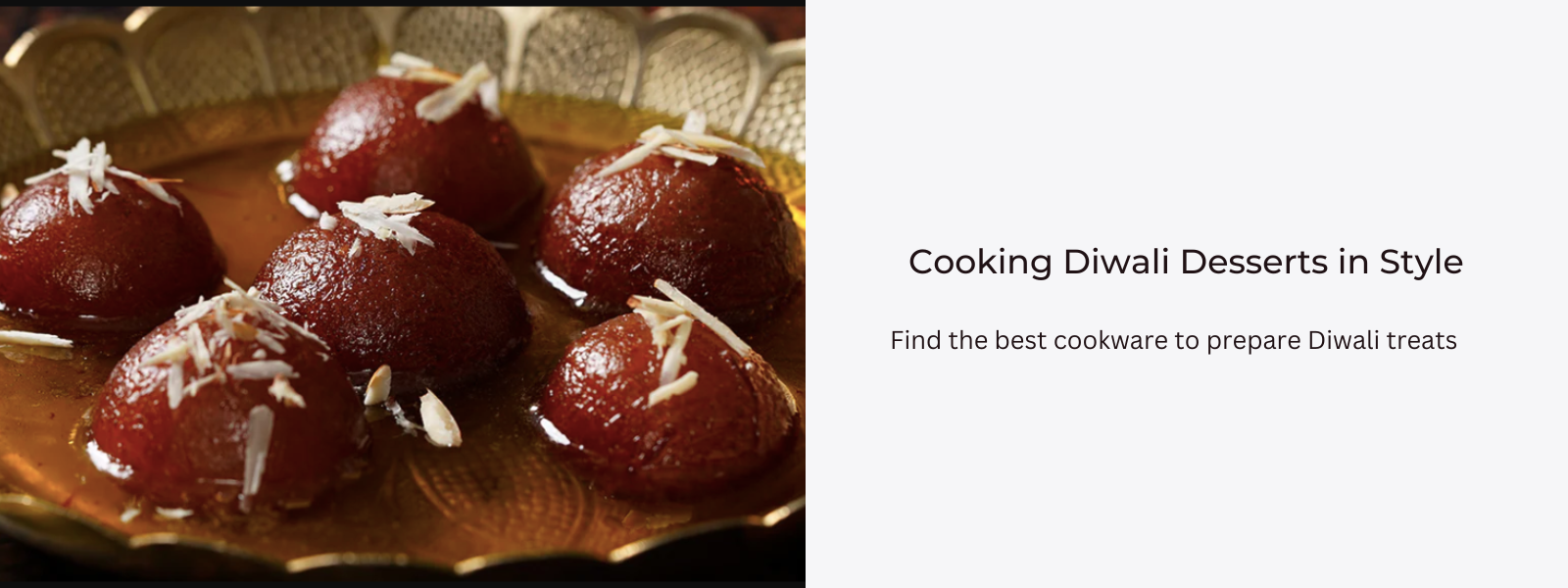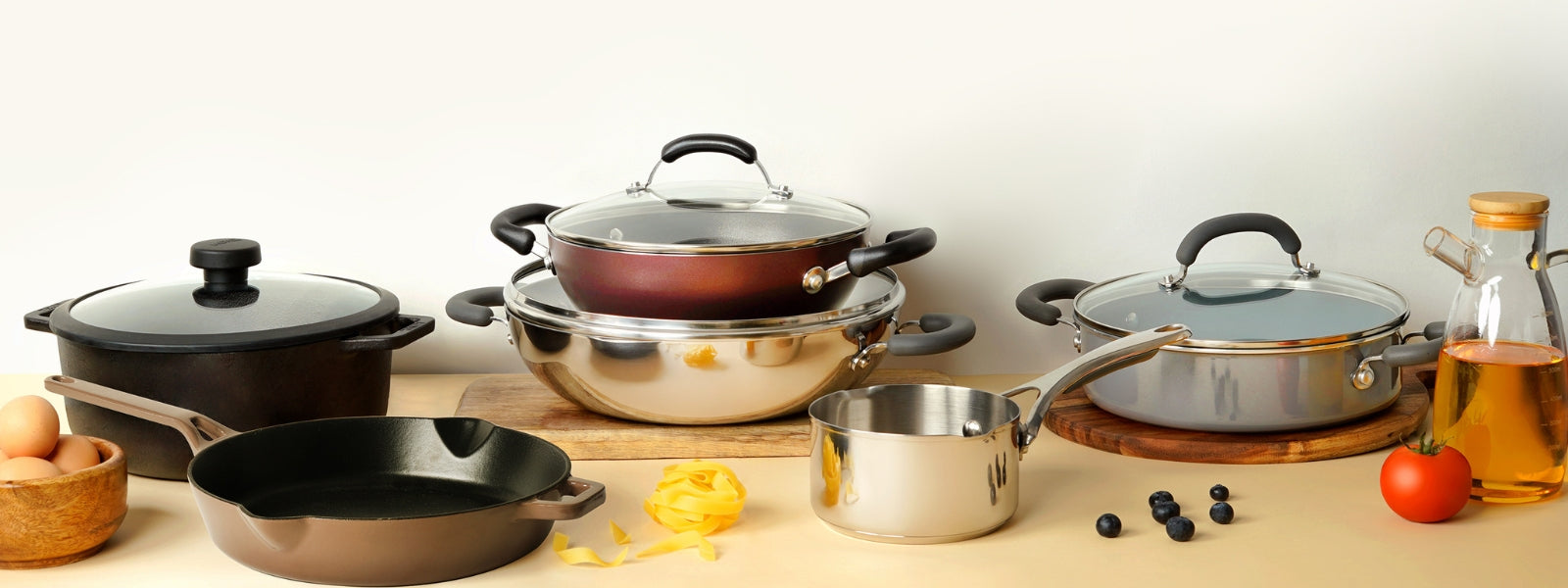Pressure cooking is a popular cooking method in India that has been used for generations. It involves cooking food in a sealed pot with high-pressure steam, which results in faster cooking times and a range of other benefits. While pressure cooking can be a convenient and efficient way to prepare meals, it's important to consider both the benefits and drawbacks before incorporating it into your cooking routine.
On the one hand, pressure cooking can save time and energy while preserving the nutrients and flavors of your ingredients. It's also a great way to tenderize tough meats and legumes, making them easier to digest. In addition, pressure cooking is a versatile method that can be used for various dishes, from stews and soups to rice and beans.
On the other hand, pressure cooking can also have some drawbacks. For example, it can be challenging to control the cooking process and achieve the desired texture or consistency. It can also be dangerous if not used properly, as the high pressure and heat can lead to explosions or burns. Additionally, some people may find that the flavors of their dishes are not as complex or nuanced as those prepared using other methods.
In this blog post, we will explore the benefits and drawbacks of pressure cooking in more detail and provide tips and recipes to help you get the most out of this popular cooking method in your Indian kitchen.
Table of Contents
Introduction
Pressure cooking is a cooking method that has been around for over a century, but it has recently experienced a surge in popularity due to its many benefits. This method involves cooking food in a sealed pot with high-pressure steam, resulting in faster cooking times and numerous advantages. However, there are also some potential drawbacks to consider when using pressure cooking. In this blog post, we will explore the benefits and drawbacks of pressure cooking as a cooking method in an Indian kitchen. We will examine the science behind pressure cooking, as well as discuss its impact on nutrition and taste. Additionally, we will provide tips for successful pressure cooking and share some delicious recipes to try. By the end of this post, you will have a better understanding of the benefits and drawbacks of pressure cooking and how to use this method effectively in your own Indian kitchen.
Benefits of Pressure Cooking in an Indian Kitchen
- Time and energy efficiency
Pressure cooking is an incredibly efficient cooking method that can help save time and energy in an Indian kitchen. This is because pressure cooking uses high-pressure steam to cook food quickly and thoroughly. In fact, pressure cooking can reduce cooking time by up to 70% compared to other cooking methods, such as boiling or simmering. This can be particularly beneficial in busy Indian kitchens where time is often at a premium. Additionally, because the pot is sealed, there is less heat loss and less energy is required to maintain pressure during cooking.
2. Nutrient preservation
One of the biggest benefits of pressure cooking in an Indian kitchen is its ability to help preserve the nutrients in ingredients. This is because pressure cooking uses high-pressure steam, which can help to retain more of the nutrients in Indian ingredients, such as vitamins and minerals. Additionally, because the cooking time is shorter, there is less time for nutrients to be lost due to exposure to heat and water. Research has shown that pressure cooking can help to preserve more nutrients in food than boiling, simmering, or frying.
3. Tenderization of tough ingredients
Another benefit of pressure cooking in an Indian kitchen is its ability to tenderize tough ingredients. This is because pressure cooking can help to break down tough fibers in ingredients such as meat and beans, resulting in tender and flavorful dishes. This is particularly useful in Indian cooking, where many dishes contain tough ingredients that can benefit from this method. Examples of Indian dishes that benefit from pressure cooking for tenderization include biryani, keema, and rajma.
4. Versatility of dishes
One of the great things about pressure cooking in an Indian kitchen is its versatility. Pressure cooking can be used to prepare a wide range of Indian dishes, from lentils and beans to stews and curries. This is because pressure cooking is a very flexible cooking method that can be used to prepare both meat and vegetarian dishes. Additionally, pressure cooking can be used to prepare dishes that are traditionally time-consuming, such as biryani, in a fraction of the time. This makes pressure cooking a great choice for Indian cooks who want to prepare a variety of flavorful dishes quickly and efficiently.
In conclusion, pressure cooking is a highly efficient and versatile cooking method that offers many benefits for Indian cooks. From time and energy efficiency to nutrient preservation and tenderization of tough ingredients, pressure cooking is a great choice for busy Indian kitchens. However, it is important to note that there are also some drawbacks to pressure cooking, which will be discussed further in the next section of this blog post.
Drawbacks of Pressure Cooking in an Indian Kitchen
Pressure cooking has become a popular cooking method in Indian kitchens due to its ability to cook food faster and retain more nutrients. However, like any other cooking method, it has its drawbacks as well. In this article, we will discuss the drawbacks of pressure cooking in an Indian kitchen.
Difficulty in controlling the cooking process:
One of the major drawbacks of pressure cooking is the difficulty in controlling the cooking process. Unlike traditional cooking methods, pressure cooking requires precise timing and pressure control. If the pressure is too high, the food may overcook and become mushy. On the other hand, if the pressure is too low, the food may not cook properly. This can be especially challenging for beginners who are not familiar with the pressure cooking process.
Potential dangers and safety precautions:
Another major concern with pressure cooking is the potential dangers involved. Pressure cookers work by trapping steam inside, which creates pressure and raises the temperature inside the pot. If the pressure inside the cooker becomes too high, the pot can explode, causing serious injury or even death. To avoid such dangers, it is important to follow the manufacturer's instructions and take necessary safety precautions while using a pressure cooker.
Limited complexity in flavor and texture:
Pressure cooking is known for cooking food quickly, but it can also limit the complexity of flavors and textures. While some dishes can benefit from pressure cooking, others may lose their distinct flavors and textures. For instance, slow-cooked dishes like stews and curries may lose their rich flavors and texture when cooked in a pressure cooker. Additionally, pressure cooking may not be ideal for dishes that require a crispy or crunchy texture.
In conclusion, pressure cooking is a popular cooking method in Indian kitchens for its ability to cook food quickly and retain nutrients. However, it also has its drawbacks, including difficulty in controlling the cooking process, potential dangers and safety precautions, and limited complexity in flavor and texture. As with any cooking method, it is important to weigh the benefits and drawbacks and make an informed decision based on your cooking needs and preferences.
Tips for Successful Pressure Cooking in an Indian Kitchen:
Pressure cooking is a popular cooking method in Indian kitchens due to its speed, efficiency, and ability to retain nutrients. However, in order to achieve the best results with pressure cooking, it's important to follow some key tips and tricks. In this blog post, we will explore some essential tips for successful pressure cooking in an Indian kitchen.
The first tip for successful pressure cooking is to choose the right pressure cooker. There are many different types of pressure cookers available on the market, ranging from stainless steel to aluminum to electric models. When choosing a pressure cooker, it's important to consider your needs and preferences. For example, if you have a gas stove, a stainless steel pressure cooker may be the best option, whereas an electric model may be better suited for an induction cooktop.
Once you have chosen the right pressure cooker, the next step is to prepare your ingredients properly. This means cutting vegetables and meat into uniform sizes and soaking legumes and beans before cooking. Properly preparing your ingredients will ensure that they cook evenly and that the flavors are fully absorbed into the dish.
Another important tip for successful pressure cooking is to monitor the cooking process closely. While pressure cooking can be a quick and efficient way to cook food, it's important to keep an eye on the pressure and the cooking time. This will help you to prevent overcooking or undercooking and ensure that the dish is cooked to perfection.
In addition to these tips, it's also important to use the right amount of liquid in your pressure cooker. Most recipes will specify how much liquid is needed, but as a general rule, you should use at least 1/2 cup of liquid for every cup of food you are cooking. This will help to prevent the food from sticking to the bottom of the pressure cooker and will ensure that there is enough steam to cook the food properly.
In conclusion, pressure cooking is a fantastic cooking method for busy Indian kitchens. By following these essential tips for successful pressure cooking, you can ensure that your dishes are cooked to perfection every time and that you get the most out of this popular cooking technique.
Recipes for Pressure Cooking in an Indian Kitchen
Cooking methods
1. Quick and easy lentil curry:
When it comes to cooking lentils, pressure cooking is the best method for several reasons. Firstly, pressure cooking ensures that the lentils are cooked evenly and thoroughly, resulting in a soft and creamy texture. Additionally, pressure cooking significantly reduces the cooking time, which means that you can have a delicious lentil curry on the table in just a few minutes. Pressure cooking also helps to retain the nutrients in the lentils, making it a healthier cooking method. Compared to other cooking methods like boiling or slow cooking, pressure cooking is the most efficient and effective way to cook lentils. So, if you're looking for a quick and easy lentil curry recipe, using a pressure cooker is definitely the way to go.
Pressure cooking is an excellent method for cooking biryani because it helps to infuse the spices and flavors into the chicken and rice, resulting in a delicious and aromatic dish. One of the main advantages of pressure cooking biryani is that it significantly reduces the cooking time, which is particularly helpful when you're short on time. Additionally, pressure cooking ensures that the chicken is cooked evenly and thoroughly, which is essential for food safety. Compared to other cooking methods like slow cooking or oven baking, pressure cooking is the most efficient and effective way to cook biryani. So, if you want to enjoy a flavorful and spicy chicken biryani in a fraction of the time, using a pressure cooker is definitely the way to go.
3. Flavorful vegetable pulao:
Pressure cooking is an ideal method for making vegetable pulao because it allows the rice to absorb all the flavors and spices of the vegetables and spices, resulting in a delicious and flavorful dish. One of the main advantages of pressure cooking pulao is that it significantly reduces the cooking time, which is particularly helpful when you're short on time. Additionally, pressure cooking ensures that the vegetables are cooked evenly and thoroughly, which is essential for food safety. Compared to other cooking methods like boiling or slow cooking, pressure cooking is the most efficient and effective way to cook vegetable pulao. So, if you're looking for a flavorful and healthy vegetable pulao recipe that's also quick and easy to make, using a pressure cooker is definitely the way to go.
In conclusion, pressure cooking is an excellent cooking method that offers several benefits, such as faster cooking times, better retention of nutrients, and enhanced flavor and aroma in dishes. However, it also has some drawbacks, such as the potential for overcooking or undercooking and the need to carefully follow safety guidelines. Despite these drawbacks, the benefits of pressure cooking make it an ideal cooking method for those who value efficiency and healthy eating.
We encourage you to experiment with pressure cooking and try new dishes beyond the recipes we've discussed today. The possibilities are endless, and you're sure to discover new and exciting flavor combinations. Just remember to always follow safety guidelines when using a pressure cooker and adjust cooking times and settings based on your specific appliance and ingredients. We hope this article has inspired you to explore the world of pressure cooking and discover the many benefits it has to offer.









Leave a comment